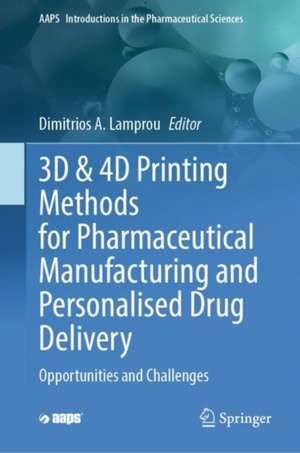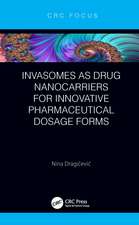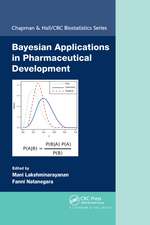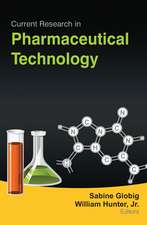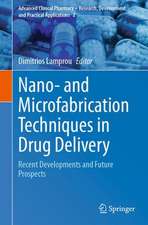3D & 4D Printing Methods for Pharmaceutical Manufacturing and Personalised Drug Delivery: Opportunities and Challenges: AAPS Introductions in the Pharmaceutical Sciences, cartea 11
Editat de Dimitrios Lamprouen Limba Engleză Hardback – 5 aug 2023
Preț: 648.56 lei
Preț vechi: 763.01 lei
-15% Nou
Puncte Express: 973
Preț estimativ în valută:
124.10€ • 129.92$ • 102.69£
124.10€ • 129.92$ • 102.69£
Carte tipărită la comandă
Livrare economică 05-19 aprilie
Preluare comenzi: 021 569.72.76
Specificații
ISBN-13: 9783031341182
ISBN-10: 303134118X
Ilustrații: XIII, 321 p. 50 illus.
Dimensiuni: 155 x 235 mm
Greutate: 0.64 kg
Ediția:1st ed. 2023
Editura: Springer International Publishing
Colecția Springer
Seria AAPS Introductions in the Pharmaceutical Sciences
Locul publicării:Cham, Switzerland
ISBN-10: 303134118X
Ilustrații: XIII, 321 p. 50 illus.
Dimensiuni: 155 x 235 mm
Greutate: 0.64 kg
Ediția:1st ed. 2023
Editura: Springer International Publishing
Colecția Springer
Seria AAPS Introductions in the Pharmaceutical Sciences
Locul publicării:Cham, Switzerland
Cuprins
3D and 4D printing in digital healthcare.- 3D Printing for Novel Dosage Form Design.- 3D Printing and regulatory considerations.- Printability of Pharmaceutical Polymers: Issues & Solutions.- Quality by Design (QbD) approach for individualized products based on additive manufacturing,- Material Properties and Selections for Additive Manufacturing (AM).- Preformulation of 3D printable pharmaceutical dosage forms.- Vat photopolymerization Methods for Drug Delivery Applications.- Extrusion-based 3D printing methods for oral solid dosage forms.- Binder Jetting 3D Printing in Pharmaceutical Manufacturing.- Powder bed fusion 3D printing in drug delivery.- Bioprinting in Personalised Medications.- Shape memory materials and 4D printing in pharmaceutics.- Characterisation methods of final printed products.
Notă biografică
Dimitrios Lamprou (Ph.D. MBA) is a Full Professor (Chair) of Biofabrication and Advanced Manufacturing at Queen’s University Belfast. Dimitrios, has been recognised as world leader in 3D Printing, with PubMed-based algorithms placed him currently in the top 0.087% of scholars in the world writing about 3D Printing in the last 10 years. He is currently the author of over 150 peer-reviewed publications and of over 350 conference abstracts, and has over 150 Oral Talks in institutions and conferences across the world. His research and academic leadership have recognised in a range of awards, including the Royal Pharmaceutical Society of Great Britain Science Award and the Scottish Universities Life Sciences Alliance Leaders Scheme Award.
Textul de pe ultima copertă
New materials and manufacturing techniques are emerging with potential to address the challenges associated with the manufacture of pharmaceutical systems that will teach new tricks to old drugs. 3D printing (3DP) is a technique that can used for the manufacturing of dosage forms, and especially targeting paediatric and geriatric formulations, as permits the fabrication of high degrees of complexity with great reproducibility, in a fast and cost-effective fashion, and offers a new paradigm for the direct manufacture of personalised dosage forms. The book is covering the basics behind each additive manufacturing (AM) method, current applications in pharmaceutics for each 3DP method, and case studies (examples) from a teaching perspective, targeting undergraduate (UG) and postgraduate (PG) students. A unique to this book is the integration of studies based upon the use of different AM technologies, which designed to reinforce importance printing parameters and material considerations. The book includes case studies or multiple-choice questions (MCQs), which allow application of the content in a flipped-classroom.
Caracteristici
One book covering all advanced methods of 3D printing 3D & 4D Printing case studies for teaching UG & PG students Authors are pioneers and world leaders
